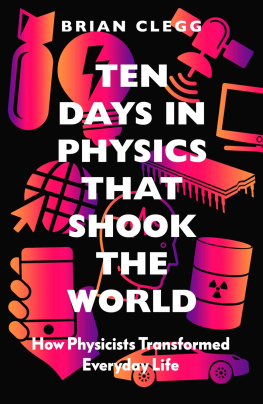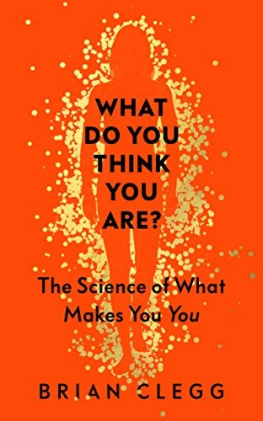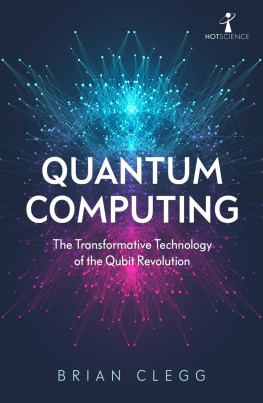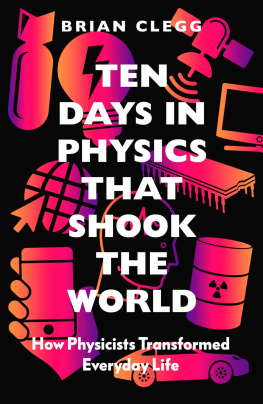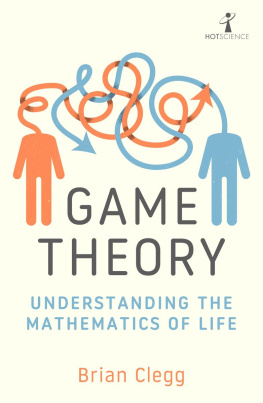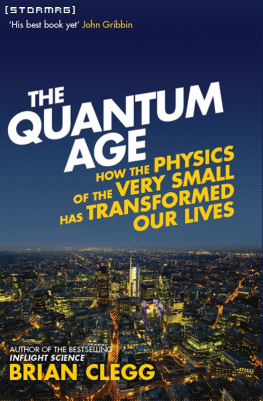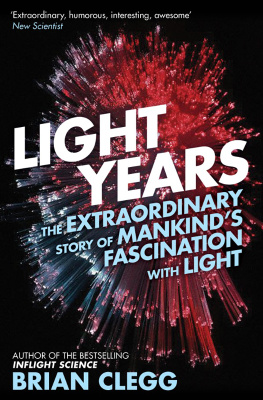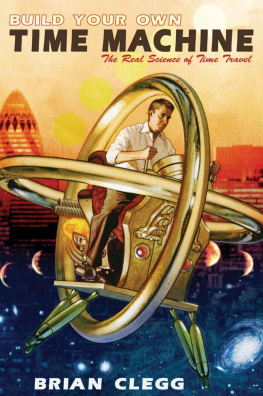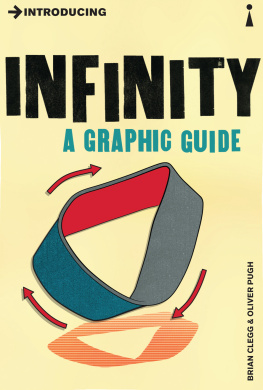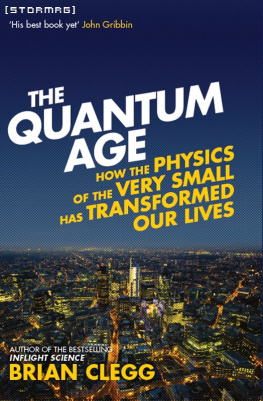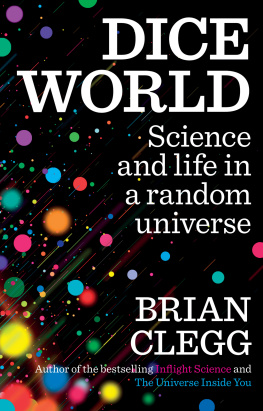Clegg Brian - Ten Days in Physics that Shook the World
Here you can read online Clegg Brian - Ten Days in Physics that Shook the World full text of the book (entire story) in english for free. Download pdf and epub, get meaning, cover and reviews about this ebook. year: 2021, publisher: Icon Books Ltd, genre: Non-fiction. Description of the work, (preface) as well as reviews are available. Best literature library LitArk.com created for fans of good reading and offers a wide selection of genres:
Romance novel
Science fiction
Adventure
Detective
Science
History
Home and family
Prose
Art
Politics
Computer
Non-fiction
Religion
Business
Children
Humor
Choose a favorite category and find really read worthwhile books. Enjoy immersion in the world of imagination, feel the emotions of the characters or learn something new for yourself, make an fascinating discovery.
- Book:Ten Days in Physics that Shook the World
- Author:
- Publisher:Icon Books Ltd
- Genre:
- Year:2021
- Rating:3 / 5
- Favourites:Add to favourites
- Your mark:
- 60
- 1
- 2
- 3
- 4
- 5
Ten Days in Physics that Shook the World: summary, description and annotation
We offer to read an annotation, description, summary or preface (depends on what the author of the book "Ten Days in Physics that Shook the World" wrote himself). If you haven't found the necessary information about the book — write in the comments, we will try to find it.
Ten Days in Physics that Shook the World — read online for free the complete book (whole text) full work
Below is the text of the book, divided by pages. System saving the place of the last page read, allows you to conveniently read the book "Ten Days in Physics that Shook the World" online for free, without having to search again every time where you left off. Put a bookmark, and you can go to the page where you finished reading at any time.
Font size:
Interval:
Bookmark:
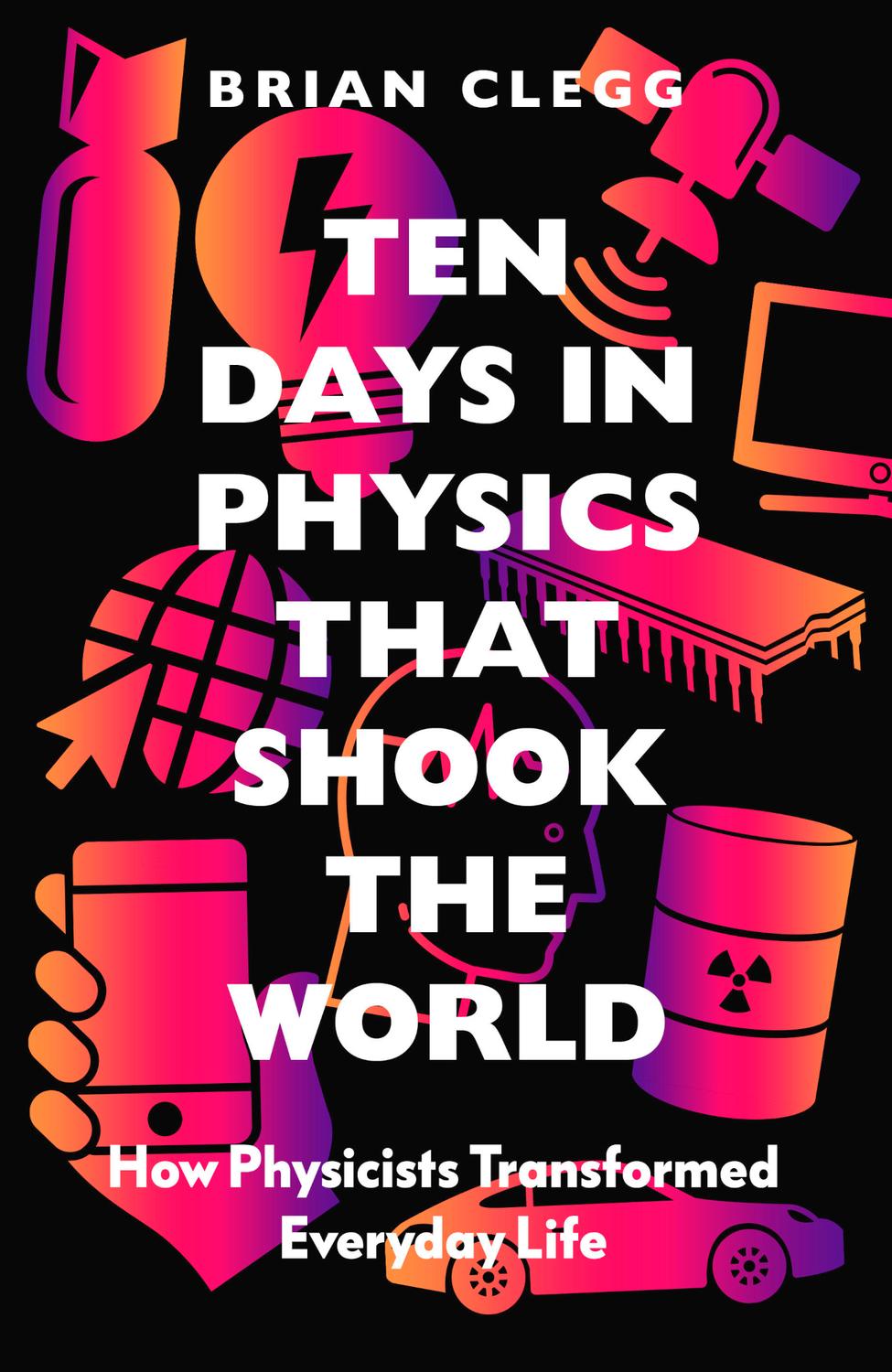
For Gillian, Chelsea and Rebecca
P hysics is central to our understanding of how the world works. But more than that, key breakthroughs in physics and physics-based engineering have transformed the world we live in. In this book, we will journey back to ten key days in history to understand how a particular breakthrough was achieved, meet the individuals responsible and see how that breakthrough has influenced our lives.
It is fashionable for historians of science to criticise the idea that individuals deserve to be considered geniuses who have made a unique contribution. And, as will be made clear, it is certainly true that all of the people picked out on our ten days built their contributions on the work of others. Yet there is no doubt that until the three most recent of our days, each individual was responsible for a change that contributed to making the modern world possible.
In 21st-century physics, significant breakthroughs are often the work of big teams. The research undertaken at the CERN particle laboratory or on the LIGO gravitational wave experiment in the US can involve hundreds or even thousands of contributors. Yet historically there have been individuals whose contributions have been more than that of a standard cog in a wheel. These are people who stand out beyond their peers, however much their work may have depended on the wider canvas of thinkers of their day. And even now, although many scientists may work on a particular theory or xii experiment, there is often a key moment when a handful of individuals have been pivotal in making a discovery happen.
The earlier days in our journey through the history of physics involve the development of a fundamental understanding of the underlying science, while the later ones highlight physics-based engineering, involving the invention of new ways to use physics knowledge. Its not that we havent seen new developments in pure physics that have changed our understanding of the universe since the 1950s, but most of the more recent such advances have had fewer direct impacts on our lives. Black holes or the Higgs boson, for example, are fascinating, but lack practical applications. In this book, we stay with physics and its applications that made the modern world.
We will begin back in 1687 with the publication of Isaac Newtons remarkable book Philosophiae Naturalis Principia Mathematica. Now virtually unreadable without professional guidance, as much for its style as for being in Latin, the publication of the Principia nonetheless represented a major move forward in the power of natural science. At the time, under a different type of curriculum to the present day, what Newton did was regarded as mathematics rather than physics. Even so, this was a pivotal moment in the history of science.
For our second day, we travel forward to 1831, shortly before the Victorian period, for Michael Faradays paper on electrical induction. Recently, some of those attempting to inflate the importance of artificial intelligence have claimed that AI is more important than electricity. Leaving aside the absurdity that it is impossible to have artificial intelligence without electricity, this overlooks the reality that electricity is absolutely central to modern life and becoming even more so as we move away from fossil fuels to electricity to power, xiii for example, cars, heating and industrial energy. Faradays work kickstarted the practical use of what had been up to that point an entertaining novelty without worthwhile application.
We wholeheartedly enter the Victorian era on Day 3 in 1850, moving forward a couple of decades from Faraday to meet the less familiar Rudolf Clausius and explore his contribution to thermodynamics. It was thermodynamics that took the industrial revolution to a whole new level, with a better understanding of the steam engine. Equally, thermodynamics would make possible other heat engines, from the internal combustion engine to the turbines in power stations, and now underpins the mechanisms of modern heating, fridges and air conditioning. We may be losing our dependence on internal combustion, but the others remain important and thermodynamics is, at its most basic, the driving force behind life itself.
Just over ten years later, in 1861, Day 4 introduces us to Scottish physicist James Clerk Maxwell. Where Faraday gave us the means to make use of electricity, Maxwells work opened up an understanding of the electromagnetic spectrum that includes visible light, but gives us far more. Not only did this lead to radio, microwaves, TVs and Xrays, Maxwells legacy is typified by that wildly successful piece of technology, the mobile phone, with over 3 billion deployed worldwide.
Day 5 takes us to the final years of the 19th century and the work of the phenomenon that was Marie Curie. A woman who thrived in what was then firmly a mans world, Curie achieved remarkable things in the study of radioactivity, and the use of Xrays, with major medical benefits. On this key day, Curie revealed her most important discovery in the science of radioactive materials, radium, and set the direction for the study of radioactivity that seemed able to produce energy from nowhere.
xiv The explanation for the source of radioactive energy came on Day 6 in 1905, with the publication of the last of a series of papers in that year that took Albert Einstein from being an obscure patent clerk to a name that would be celebrated across the world. In just three pages, Einstein showed how the special theory of relativity (published just a few months earlier) forged an unbreakable link between mass and energy, leading to the most famous equation of all time, E=mc2.
For Day 7, we discover an unfamiliar name to many in the Dutch physicist Heike Kamerlingh Onnes. Working in the early years of the 20th century, Kamerlingh Onnes was the master of ultra-low temperatures and discovered superconductivity, where electrical resistance disappears, making it possible to produce the super-strong magnets required for levitating trains, MRI scanners and specialist applications such as particle accelerators.
Superconductivity is a quantum effect, and Day 8 finds us in 1947, with the viewpoint shifting from basic physics to applications of quantum theory in particular the then rapidly developing field of electronics. It was on this day that John Bardeen and Walter Brattain, based at Bell Labs, made the earliest working transistor, the first generation of a device that would transform all our lives.
Quantum effects were also behind our Day 9 invention in 1962 of the light emitting diode (LED). This is a particularly hard event to pin down in history, as there were so many stages in the development of this technology, which is why it has only been in the 21st century, some 50 years after that date, that LEDs have become the dominant method of lighting our homes, streets and workplaces. The many subtle variants in early attempts make the choice of James R. Biard and Gary Pittmans breakthrough one of several possible key days; however, the pair have one of the best claims after producing the first commercially viable LED. xv
The last of our historical days in physics, Day 10, sees the first link made in 1969 in the computer network that became the internet. As with LEDs, Steve Crocker and Vint Cerf were not the only ones involved in this project, but they played a crucial role, and are the most recognisable faces of the internets birth. Its appropriate that this breakthrough took place the same year as the first human landing on the Moon, with Neil Armstrongs famous One small step for [a] man, one giant leap for mankind. What was indeed a small step forward in connecting two large computers to enable remote access became what is arguably the giant leap of the definitive technology of the modern age.
Font size:
Interval:
Bookmark:
Similar books «Ten Days in Physics that Shook the World»
Look at similar books to Ten Days in Physics that Shook the World. We have selected literature similar in name and meaning in the hope of providing readers with more options to find new, interesting, not yet read works.
Discussion, reviews of the book Ten Days in Physics that Shook the World and just readers' own opinions. Leave your comments, write what you think about the work, its meaning or the main characters. Specify what exactly you liked and what you didn't like, and why you think so.

